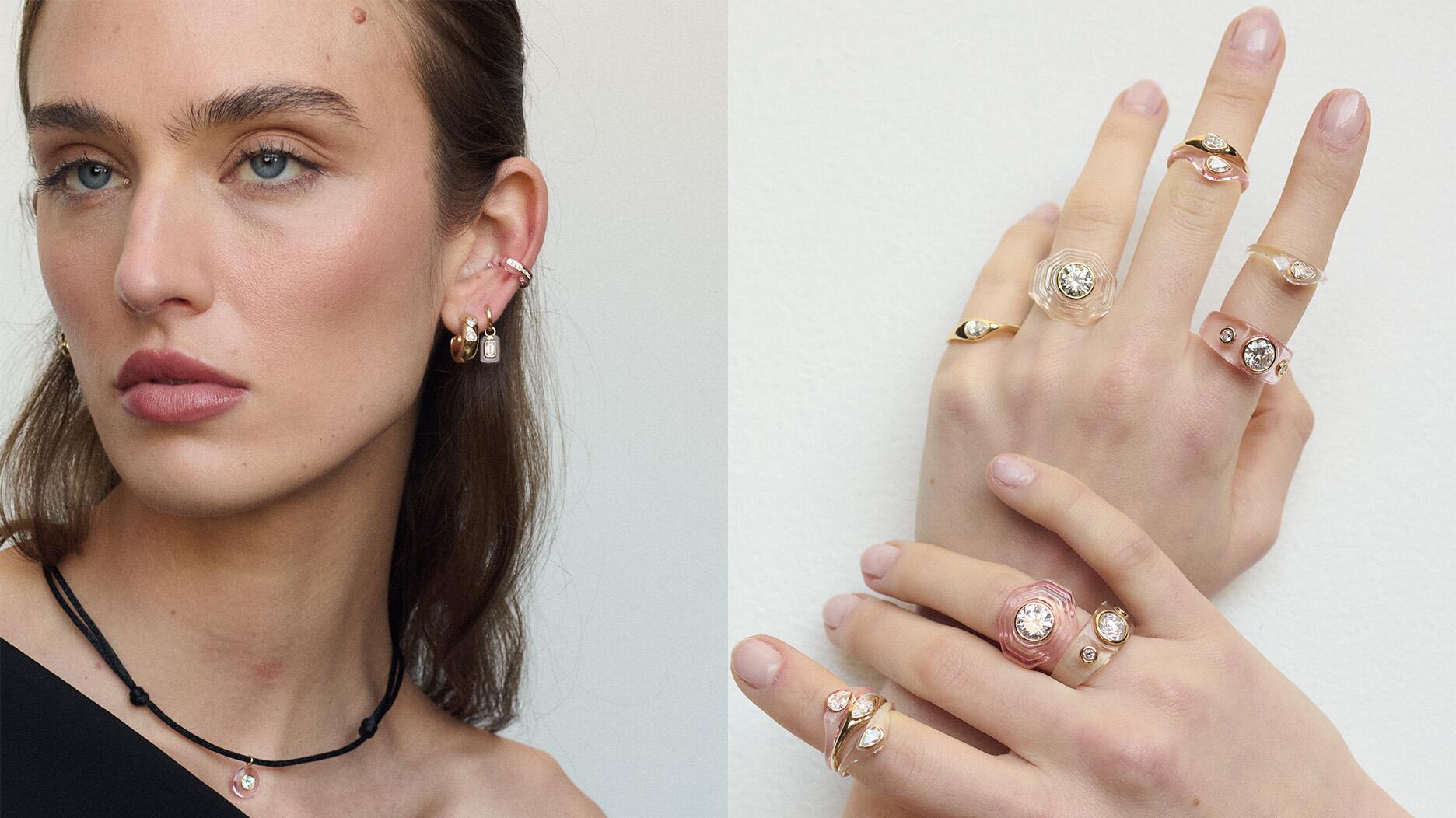“Bridgerton” actresses Hannah Dodd and Claudia Jessie star in the brand’s “Rules to Love By” campaign.
GIA’s New Reports for Lab-Grown Diamonds Are Out
They include the same color and clarity terminology the lab uses for natural diamonds, a change announced earlier this year.

Branded as LGDR by GIA, the lab has created a total of four reports for lab-grown diamonds, two for colorless or near-colorless stones and two for colored diamonds.
The reports are digital-only, and each one has a QR code that links to a lab-grown diamond education page on the GIA website.
There is the:
— Laboratory-Grown Diamond Report, which has the 4Cs color and clarity specifications, and plotted clarity and proportions diagrams; it is for D-to-Z lab-grown diamonds 0.15 carats and above;
—Laboratory-Grown Diamond Report-Dossier, a less expensive version of the full report that does not include the plotted clarity diagram; it is for D to Z lab-grown diamonds between 0.15 and 1.99 carats;
—Laboratory-Grown Colored Diamond Report, which has GIA color and clarity specifications, and plotted clarity and proportions diagrams; it is for colored lab-grown diamonds 0.15 carats and above; and
—Laboratory-Grown Colored Diamond Report-Color Identification, a less expensive version of the above that includes color specifications only.
All four reports state which process was used to grow the diamond—chemical vapor deposition (CVD) or high pressure, high temperature (HPHT)—and whether the stone might have been treated post-growth to improve the color.
GIA started grading lab-grown diamonds in 2007 but, up until this year, had treated the stones differently than natural diamonds.
On its Synthetic Diamond Grading Reports, the lab did not give specific color or clarity grades for lab-grown diamonds, describing them instead as colorless (D-E-F range diamonds) or near colorless (G-H-I range) and applying only four clarity grades—VVS, VS, SI or I—instead of the 11 used for natural diamonds.
It did this, it said, because lab-grown diamonds are created, and usually treated, to have the highest color and clarity possible and thereby don’t exhibit the same range as natural diamonds.
GIA tweaked the reports last year, saying it would drop the word “synthetic” in keeping with the latest FTC guidance, before changing its stance again this year.
The lab announced in August it would begin using specific color and clarity grades for lab-grown diamonds, though it noted in the news release on the reports that using the same terminology for both “does not correlate to nature’s continuum of rarity.”
All lab-grown diamonds GIA grades are laser-inscribed with a report number and the words “Laboratory-Grown.” Diamonds already inscribed with the terms “laboratory-grown,” “laboratory-created,” “man-made,” “synthetic” or “[manufacturer name]-created” get only a report number.
GIA’s lab-grown diamond grading reports cost the same as their natural report equivalents, though they have a distinctive look by design.
The lab has its report prices listed on its website.
The Latest

Founded by jeweler and sculptor Ana Khouri, the brand is “expanding the boundaries of what high jewelry can be.”

The jewelry manufacturer and supplier is going with a fiery shade it says symbolizes power and transformation.

How Jewelers of America’s 20 Under 40 are leading to ensure a brighter future for the jewelry industry.

The singer-songwriter will make her debut as the French luxury brand’s new ambassador in a campaign for its “Coco Crush” jewelry line.


The nonprofit’s new president and CEO, Annie Doresca, also began her role this month.

As the shopping mall model evolves and online retail grows, Smith shares his predictions for the future of physical stores.

Roseco’s 704-page catalog showcases new lab-grown diamonds, findings, tools & more—available in print or interactive digital editions.

The trade show is slated for Jan. 31-Feb. 2 at The Lighthouse in New York City's Chelsea neighborhood.

January’s birthstone comes in a rainbow of colors, from the traditional red to orange, purple, and green.

The annual report highlights how it supported communities in areas where natural diamonds are mined, crafted, and sold.

Footage of a fight breaking out in the NYC Diamond District was viewed millions of times on Instagram and Facebook.

The supplier has a curated list of must-have tools for jewelers doing in-house custom work this year.

The Signet Jewelers-owned store, which turned 100 last year, calls its new concept stores “The Edit.”

Linda Coutu is rejoining the precious metals provider as its director of sales.

The governing board welcomed two new members, Claire Scragg and Susan Eisen.

Sparkle with festive diamond jewelry as we celebrate the beginning of 2026.

The master jeweler, Olympian, former senator, and Korean War veteran founded the brand Nighthorse Jewelry.

In its annual report, Pinterest noted an increase in searches for brooches, heirloom jewelry, and ‘80s luxury.

Executive Chairman Richard Baker will take over the role as rumors swirl that a bankruptcy filing is imminent for the troubled retailer.

Mohr had just retired in June after more than two decades as Couture’s retailer liaison.

Shekhar Shah of Real Gems Inc. will serve as president of the Indian Diamond & Colorstone Association in 2026.

This year’s good luck charm features the mythical horse Pegasus, and is our first Piece of the Week of the new year.

Articles about crime, engagement rings, and a necklace worn in the World Series generated the most interest among readers.

As part of the leadership transition, Sherry Smith will take on the role of vice president of coaching strategy and development.

It marks the third time the country has headed the Kimberley Process. Ghana will serve as vice chair.

The new Bulova x Stetson designs highlight two animals often associated with the American West—the bison and the Texas Longhorn.


























